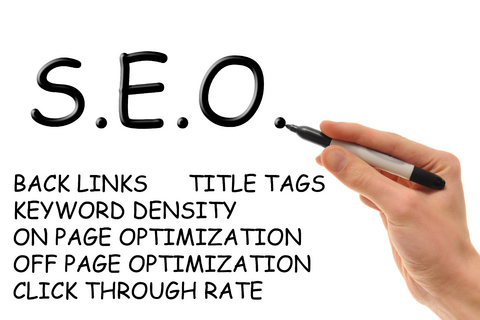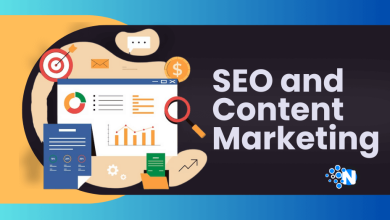12 Best Shopify SEO Tips to Sell More in 2025

As customers increasingly turn to search engines for product searches, eCommerce stores must be optimized to ensure they appear on top of search engine results pages (SERPs).
In this highly competitive landscape, eCommerce SEO is the key to outperforming competitors and gaining visibility for your eCommerce store. And if your website is built on Shopify, this article is for you!
Below I will discuss the best Shopify SEO tips to help you get more customers on your website developed with the Shopify.
Let’s start with a brief introduction to Shopify!
What is Shopify?
Shopify is one of the best website builders that helps businesses of all sizes build and manage their online presence. According to Backlinko, 4.61 million live websites use Shopify. It allows you to create, customize, and manage a website, store or blog in a simple, user-friendly interface.
With Shopify, you can easily add products to your store, accept payments from customers around the world, and manage inventory, shipping, taxes, and other aspects of your store. You can also choose from hundreds of professionally designed themes to give your store a professional look.

Shopify SEO Tips to Increase Sales
Below are some proven Shopify SEO tips to ensure your eCommerce website is performing well in search results to drive more traffic and generate more sales:
1- Compelling Website Copy
Good website copy should provide valuable information for readers, but also be optimized to rank highly in search engine results pages. The best way to achieve both of these goals is through quality SEO content.
Quality content involves writing that is focused on helping users and includes elements such as internal linking, engaging text, headings, and natural keyword placement. Additionally, the content must be optimized for both search engine readers and human readers.
This involves using a tone that is easy to understand yet speaks to a customer’s needs. Website copy should be written with readability in mind while also following the best practices such as including relevant keywords and meta descriptions.

2- User Proper Headings & Sub-headings
Using headings and subheadings in your Shopify page content can also help with SEO. Search engines are able to read and identify headings, so including them when appropriate helps search engine crawlers understand the structure of your page. This is especially important for longer pages, as it keeps visitors engaged.
3- Incorporate Visuals
When you’re creating content for your eCommerce store, it’s essential to use images and videos. Quality visuals not only make your website look more attractive and engaging, but they can also help with SEO.
Be sure to include captions and alt text on all of the images on your page so that search engine crawlers can understand what the images are all about.
4- Pay Attention to Image SEO
Did you know that images are an important factor in SEO? Make sure your visual content is optimized for the best results using common image optimization techniques.
Use descriptive alt tags for all of your images, and include relevant keywords whenever possible. Additionally, make sure that any image file names are descriptive and contain relevant keywords as well.
5- Internal Linking
Internal links are one of the most important on-page SEO factors and a great way to help search engine spiders understand the structure of your website, and they also make it easier for visitors to find related information on your site.
Use keyword-rich anchor text to link between pages within your store, allowing customers to easily navigate between topics for more information and details.
6- Optimize for Loading Speed
The speed at which your website loads is a key factor in Shopify SEO. Make sure you keep an eye on loading times and use caching solutions like a CDN to improve performance.
Choosing a mobile-friendly Shopify theme is another good idea to make your eCommerce website load faster. Also, optimize images for loading speed to make your web pages lighter to boost loading speed and you can do it yourself without hiring a Shopify SEO expert.
7- Optimize for Voice Search
Voice search is becoming increasingly popular, and making sure your store is optimized for it can help you target a larger audience. When optimizing your Shopify website for search engines, make sure to include long tail keywords that are commonly used in voice searches.
Using natural-sounding language on product pages and other content throughout your store is also a good step to optimize the Wix website for voice searches.
8- Keep an Eye on the Competition
Knowing what your competitors are doing gives you valuable insight into what works and what doesn’t in terms of SEO. Thats why, it is included in our Shopify SEO checklist. For this purpose, you should be using advanced SEO tools like Semrush.
Track their keyword rankings, page speed, content strategies, and more to stay one step ahead. Competitor analysis helps you find out the best-performing keywords and SEO strategies that can help you grow greatly.
9- Build Backlinks to Your Shopify Store
Building high-quality backlinks to your Shopify store is essential for increasing its visibility in search results and driving more customers to your website.
Backlinks act as a vote of confidence from other websites, helping search engines determine if your content is relevant and trustworthy. High-quality backlinks can also boost the rankings of individual pages on your site, driving more organic traffic.
10- Make Use of Social Media
Social media platforms such as Facebook, X (Twitter), and Instagram can be great for driving traffic to your Shopify eCommerce store. Make sure you’re regularly posting quality content and engaging with followers in order to increase visibility and organic reach.
You should also keep your social media profiles updated with current business details and informative content to attract more users and increase engagement.
11- Measure SEO Performance
It’s important to monitor the success of your SEO efforts, so track your keyword rankings, website traffic, and other metrics regularly using tools like Shopify Analytics dashboard or Google Analytics.
This will help you identify which tactics are working and which need to be improved. With the right tools, you can develop an SEO strategy that delivers real results.
12- Stay Up To Date With Algorithm Changes
Search engine algorithms are constantly evolving, so it’s important to stay up to date with the latest changes. Pay attention to announcements from search engine companies and make sure your Shopify SEO practices are aligned with them.
Read top SEO blogs and keep an eye out for Google updates to make sure your Shopify store is always up-to-date with the latest SEO practices.
Conclusion
By considering these Shopify SEO tips, you’ll be able to increase your visibility, drive more organic traffic, and ultimately sell more products in this year and beyond. A little effort now could go a long way toward growing your online store in the future.




